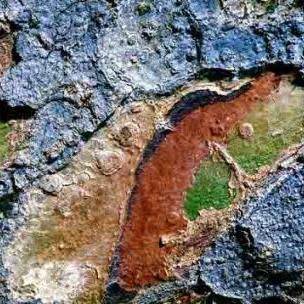













100 Commiphora mollis Seeds - Velvet Corkwood - Rare South African Indigenous Deciduous Tree
Check my rate
| Main centres: | 1-3 business days |
| Regional areas: | 3-4 business days |
| Remote areas: | 3-5 business days |














| Main centres: | 1-3 business days |
| Regional areas: | 3-4 business days |
| Remote areas: | 3-5 business days |

Commiphora mollis Seeds
Soft-leaved Commiphora, Velvet Commiphora, Velvet Corkwood, Velvet-leaved Corkwood

The myrrh genus, Commiphora, is the most species rich genus of flowering plants in the frankincense and myrrh family, Burseraceae. The genus contains approximately 190 species of shrubs and trees, which are distributed throughout the (sub-) tropical regions of Africa, the western Indian Ocean islands, the Arabian Peninsula, India, Vietnam, and South America. The genus is drought tolerant and common throughout the xerophytic scrub, seasonally dry tropical forests, and woodlands of these regions. The common name myrrh refers to several species of the genus, from which aromatic resins are derived for various fragrance and medicinal uses by humans. The common name corkwood indicates that the wood is soft, although it is suitable for carving household items and ornaments. The Afrikaans name kanniedood (cannot die') refers to the fact that cut branches or cuttings grow very easily when planted. Many species are armed with spines. Bark is often exfoliating, peeling in thin sheets to reveal colorful, sometimes photosynthetic bark, below. Stems are frequently succulent, especially in species native to drier environments. The stems of many species will exude aromatic resins when damaged. Products from many species of Commiphora have been used for various purposes, sometimes as timber, building material, and natural fencing, but more often valued for the aromatic resins produced by several members of the genus. "Myrrh", the common name for these dried resins, is fragrant and has been used both as fragrance and for medicinal purposes. Use of myrrh resin is frequent and pronounced throughout historical texts of cultural significance, including the Bible. Commiphora mollis commonly known as Soft-leaved Commiphora, Velvet Commiphora, Velvet Corkwood and Velvet-leaved Corkwood is an indigenous small to medium sized deciduous tree. Unlike the majority of Commiphora species Commiphora mollis is unarmed. The bark is grey to brown, smooth or flaking in rather thick discs. The flowers that are borne in spring before the leaves appear in small axillary clusters and are yellowish to pinkish.

